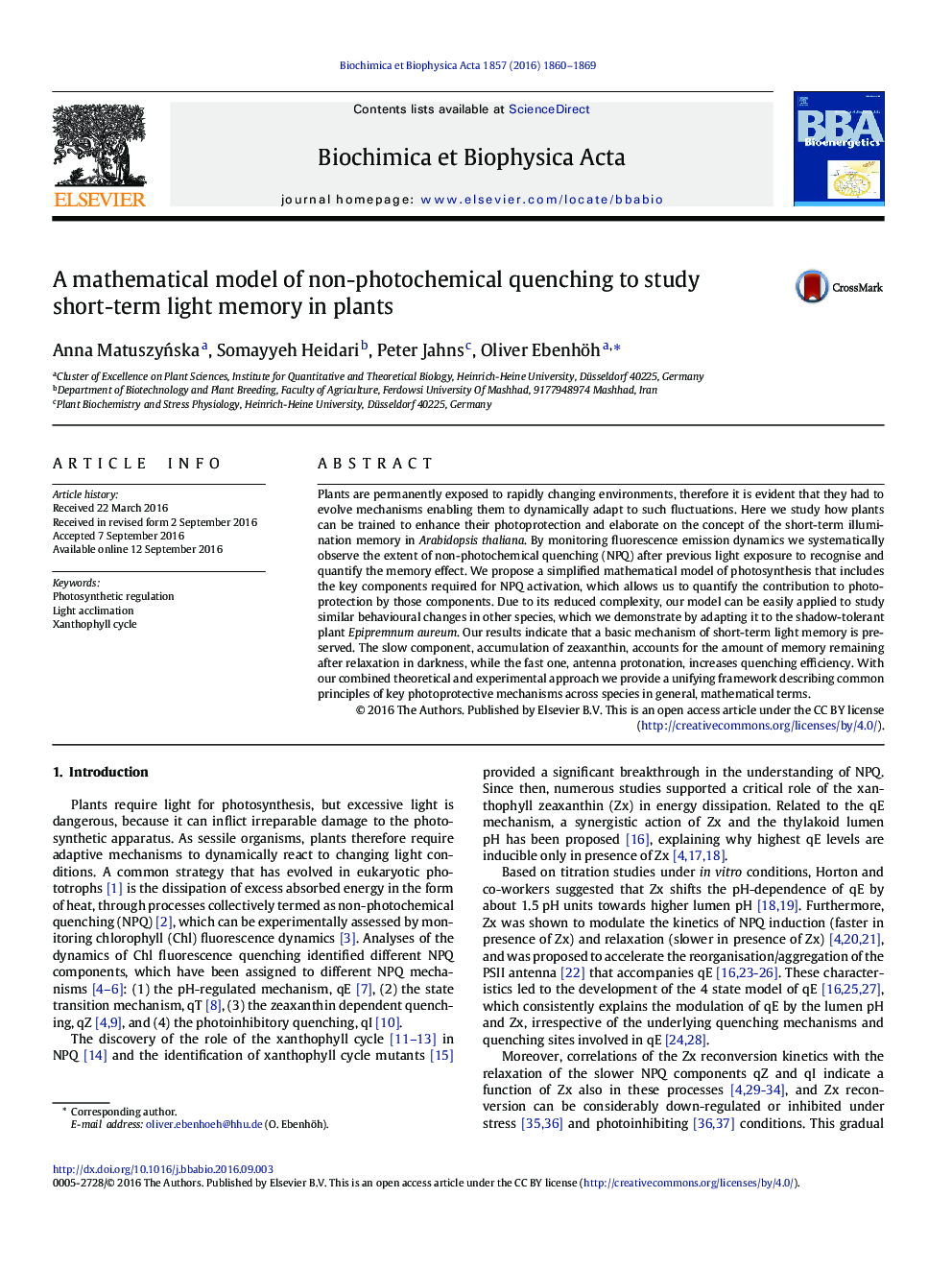| کد مقاله | کد نشریه | سال انتشار | مقاله انگلیسی | نسخه تمام متن |
|---|---|---|---|---|
| 5507283 | 1400324 | 2016 | 10 صفحه PDF | دانلود رایگان |
- We developed a simple mathematical model of NPQ that provides a generic framework to study NPQ mechanisms in silico.
- We provide a quantitative description of the contribution of the two known quenching components to short-term light memory.
- Our model can be easily adaptated to different plant species, demonstrated on Arabidopsis thaliana and Epipremnum aureum.
- The ready-to-use model serves as an in silico work bench to study common principles and species-specific differences.
Plants are permanently exposed to rapidly changing environments, therefore it is evident that they had to evolve mechanisms enabling them to dynamically adapt to such fluctuations. Here we study how plants can be trained to enhance their photoprotection and elaborate on the concept of the short-term illumination memory in Arabidopsis thaliana. By monitoring fluorescence emission dynamics we systematically observe the extent of non-photochemical quenching (NPQ) after previous light exposure to recognise and quantify the memory effect. We propose a simplified mathematical model of photosynthesis that includes the key components required for NPQ activation, which allows us to quantify the contribution to photoprotection by those components. Due to its reduced complexity, our model can be easily applied to study similar behavioural changes in other species, which we demonstrate by adapting it to the shadow-tolerant plant Epipremnum aureum. Our results indicate that a basic mechanism of short-term light memory is preserved. The slow component, accumulation of zeaxanthin, accounts for the amount of memory remaining after relaxation in darkness, while the fast one, antenna protonation, increases quenching efficiency. With our combined theoretical and experimental approach we provide a unifying framework describing common principles of key photoprotective mechanisms across species in general, mathematical terms.
Journal: Biochimica et Biophysica Acta (BBA) - Bioenergetics - Volume 1857, Issue 12, December 2016, Pages 1860-1869
